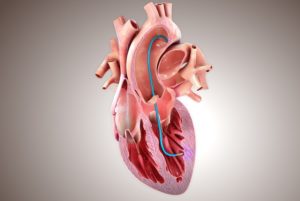
The Helix biotherapeutic delivery system (Biocardia), which delivers cell therapy to patients within four weeks of a heart attack, led to improved ejection fraction and fewer symptoms (improved by >one New York Heart Association [NYHA] class), according to data presented at EuroPCR 2019 (20–24 May, Paris, France). A press release from the company highlights the findings, and explains that the system uses a corkscrew shaped needle to anchor into damaged heart tissue, treating patients early following acute myocardial infarction (AMI) to prevent long-term heart failure.
Findings from Early transendocardial injection of autologous bone marrow-derived mononuclear cells following ischaemic myocardial events: the Alster-Helix registry were presented by Christina Paitazoglou (Cardiologicum Hamburg, Germany) during a late-breaking trial session of first-in-man trials and early phase studies.
The study aimed to determine if intramyocardial injection of autologous bone marrow-derived mononuclear cells using the Helix system two to four weeks after acute myocardial infarction is feasible, and whether it might block ventricular adverse remodeling and improve symptoms of heart failure. Nine patients were treated with cell therapy delivered intramyocardially with the Helix system, and the results were reviewed relative to 11 patients previously treated with the NOGA XP delivery system (Biosense Webster) and a control group of 11 patients treated with optimal standard care. At 12 months, patients with Helix-delivered cell therapy experienced a 7.33% improvement in ejection fraction (p=0.017) compared to the control group (there were no 12-month data available for the NOGA system). Helix patients also showed an improvement in NYHA class of >one class over control at six months (2.55±0.1 vs. 1.33±0.1, p=0.0078), which was greater than both the NOGA-treated and control groups.
“Results suggest that intramyocardial cell therapy possibly improves left ventricular function and symptoms by attenuating myocardial remodeling on top of successful PCI [percutaneous coronary intervention] and optimal standard care after AMI. Results [for the Helix system] are similar to the NOGA-treated patients, as previously observed in the Alster stem cell trial,” said Paitazoglou in her presentation.











